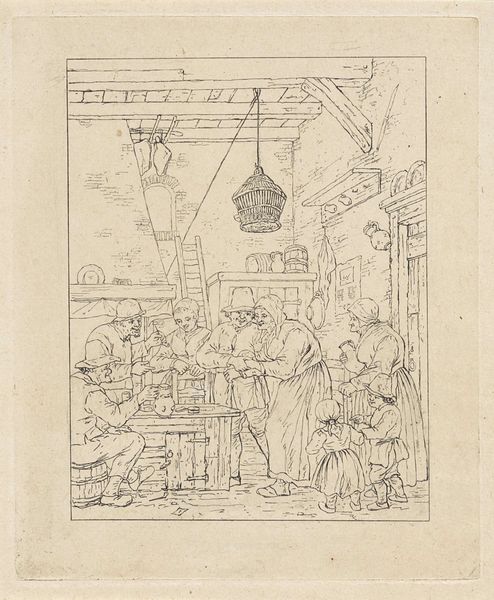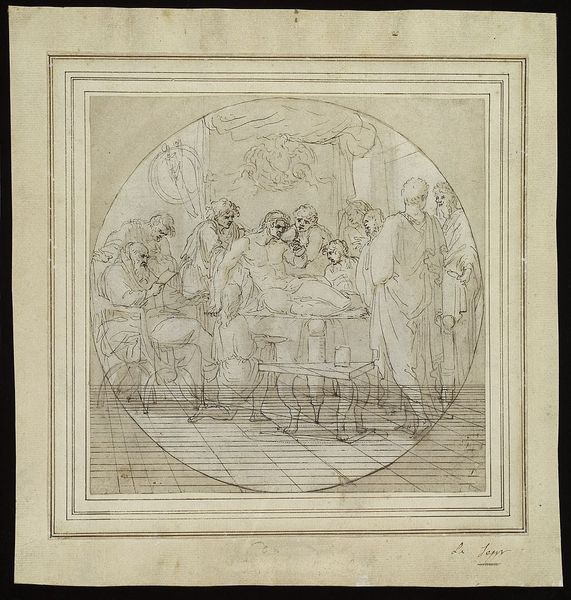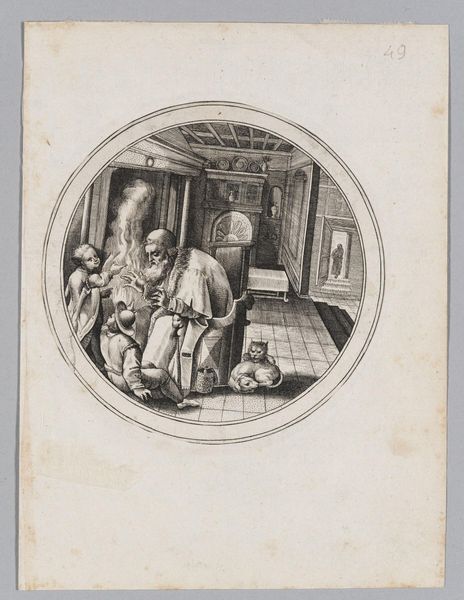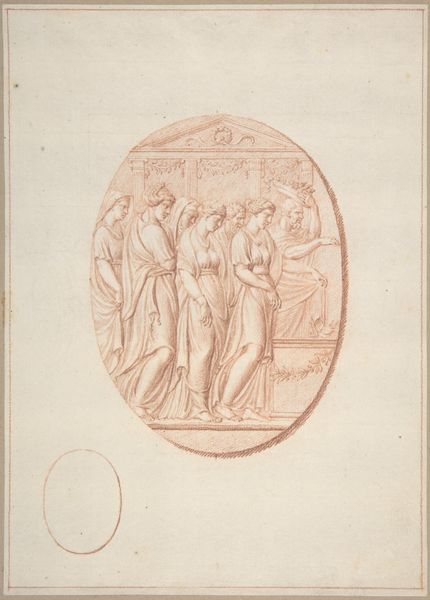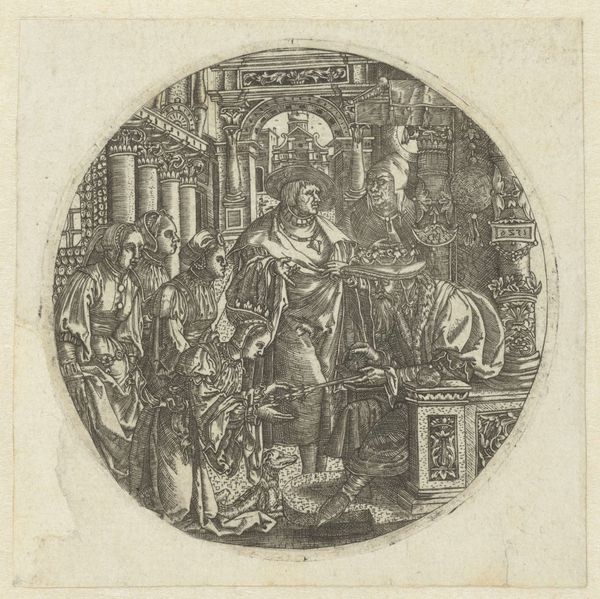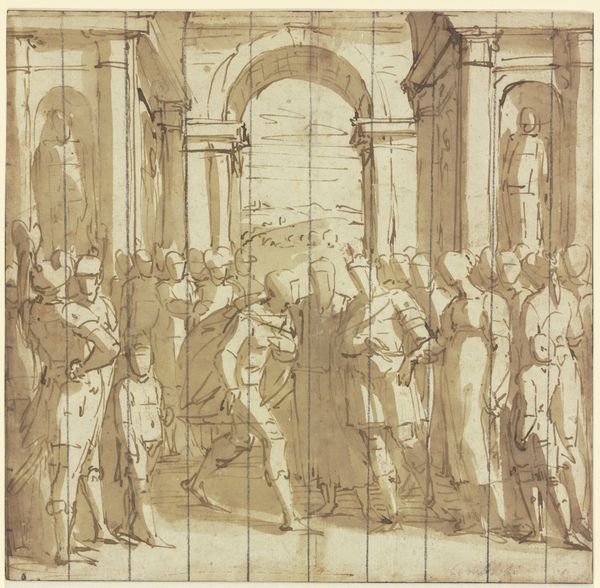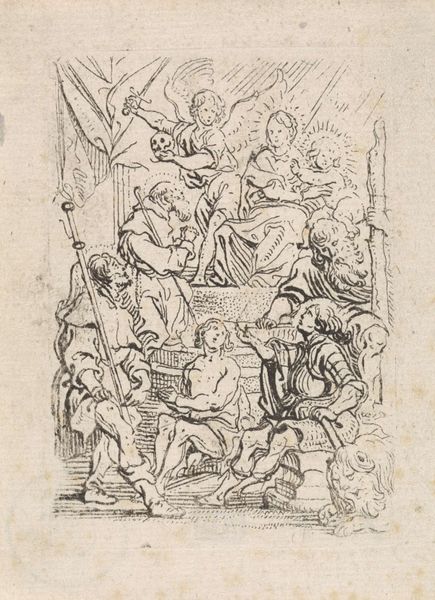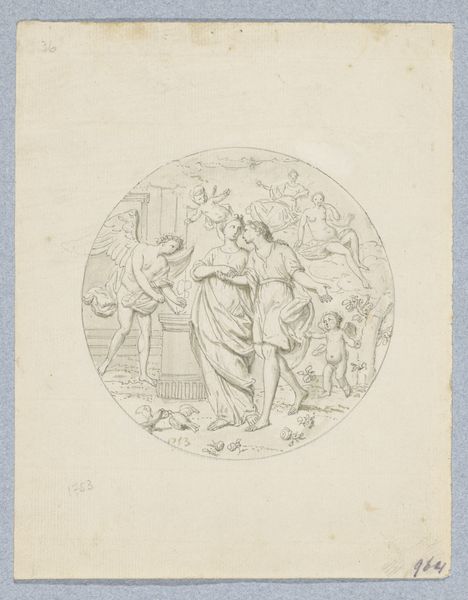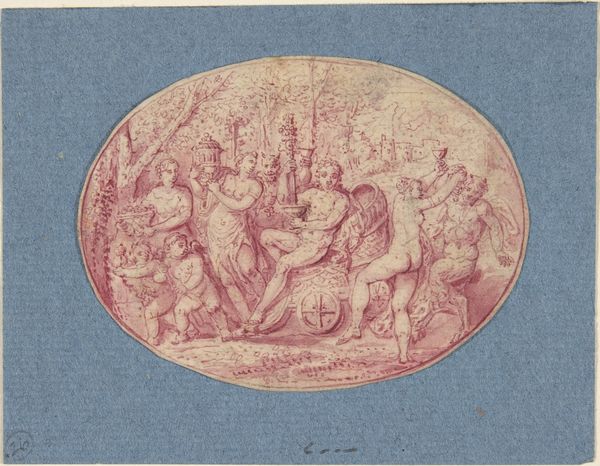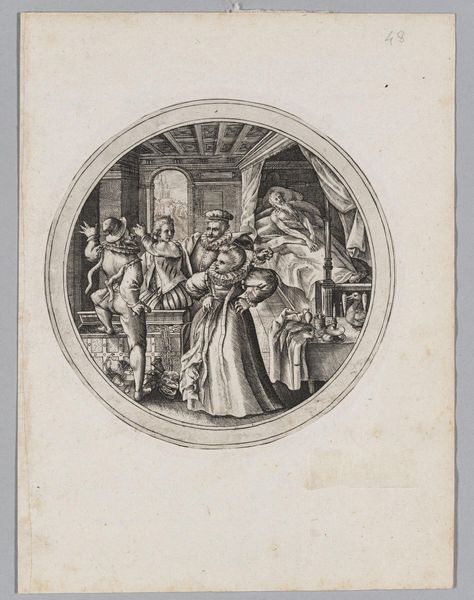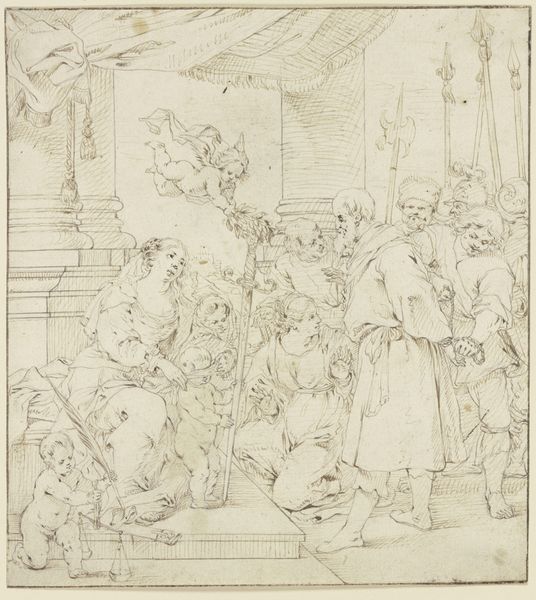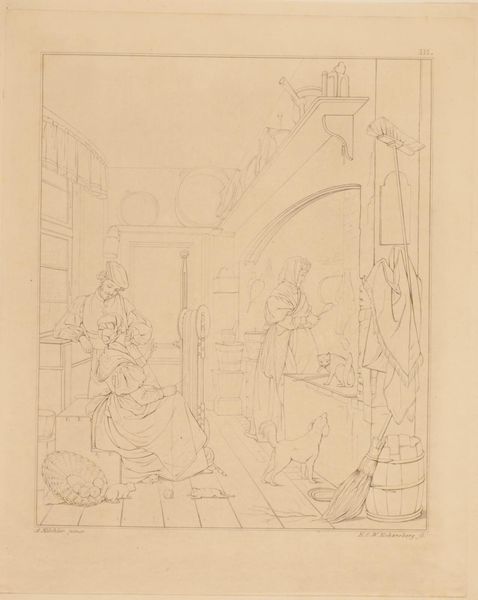
drawing, paper, pencil
#
drawing
#
allegory
#
narrative-art
#
baroque
#
figuration
#
paper
#
pencil
#
line
#
history-painting
#
academic-art
Dimensions: height 112 mm, width 113 mm
Copyright: Rijks Museum: Open Domain
Curator: Welcome. Today we’re observing "Ronde voorstelling met allegorie", or Round Scene with Allegory, a drawing rendered in pencil on paper. It was created sometime between 1683 and 1733 by Bernard Picart. Editor: It feels almost theatrical. There’s a stage-like quality to the composition, with a clear foreground, middle ground, and what appears to be a lavishly decorated background implying a court setting. The characters seem caught mid-performance, perhaps awaiting a verdict. Curator: The structure, with its circular format, immediately imposes a sense of containment, almost like a coin or a medallion. Within that boundary, Picart employs strong linear techniques to delineate figures and architectural details. Observe the throne's intricate lines and the drapery's subtle folds. It adheres to a clear academic tradition, emphasizing form and draftsmanship. Editor: And who presides? That imposing figure on the throne demands closer inspection. There seems to be a judgement taking place with someone approaching with an offering while being watched by a figure brandishing a sword. Allegories like this were often politically charged and reflected social tensions. This appears like a symbolic rendering of power and justice in that historical context. Who benefits and who suffers within that power dynamic is the obvious questions this drawing proposes. Curator: Precisely. The semiotic weight of objects, such as the scales on the floor and the tablets under the throne, adds depth to its meaning. Consider the positioning of figures: those who offer or plead stand below, those in power remain above. Each line contributes to the hierarchy displayed. Editor: Yes, the layout literally speaks volumes! Even seemingly minor elements add complexity to this political reading. We need to further unpack what Picart seems to critique about late 17th and early 18th-century notions of power, culpability and governance, the very forces that structured society. The role of class and gender here also requires consideration. Curator: Agreed. The piece functions as more than just decoration; it operates as a commentary on legal structures and, perhaps, social inequity. I will consider some more study. Editor: Thank you. Looking closely at the visual choices makes clear that Picart's image serves as a lens through which to examine the societal dynamics of his period and perhaps also those of our own.
Comments
No comments
Be the first to comment and join the conversation on the ultimate creative platform.
